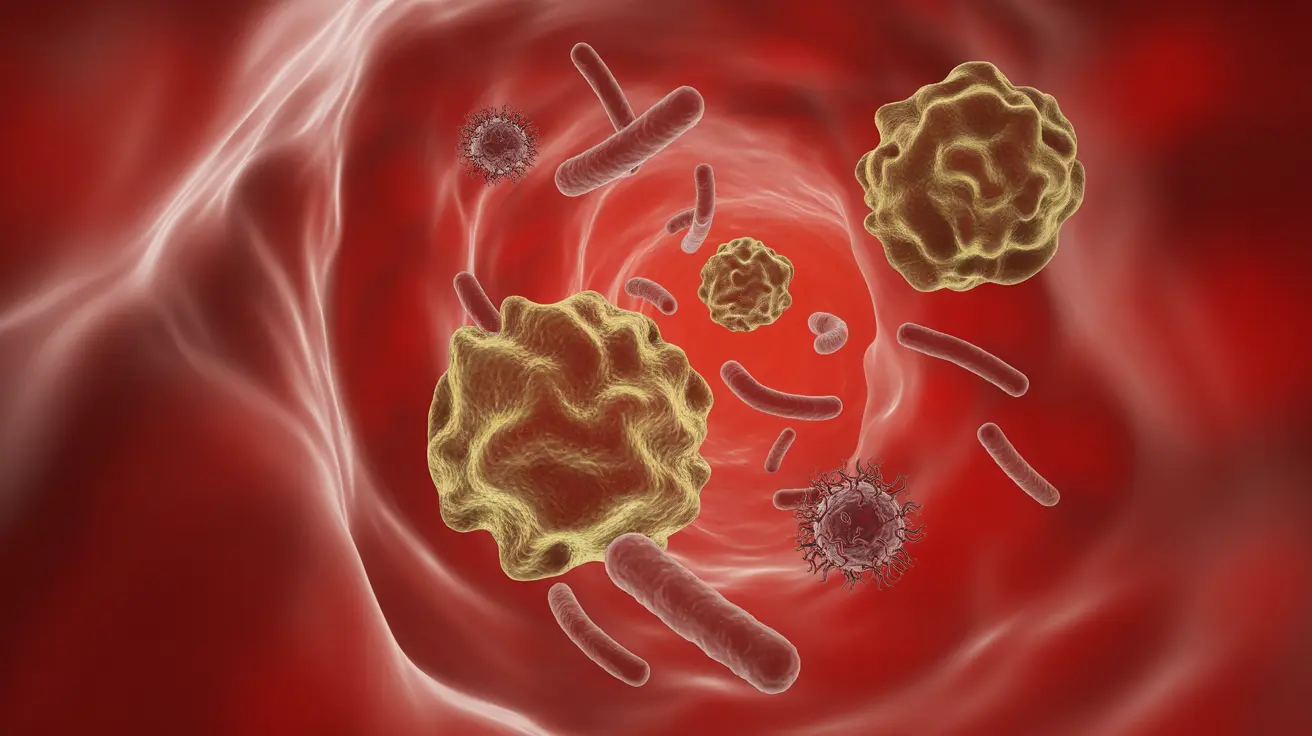A low lymphocyte count, also known as lymphocytopenia, is a condition where the number of lymphocytes (important white blood cells) in your blood falls below normal levels. This condition can be particularly concerning for individuals with lymphoma or those undergoing cancer treatment, as it may affect their immune system's ability to fight infections effectively.
Understanding the relationship between low lymphocytes, lymphoma, and cancer treatments is crucial for managing health outcomes and preventing complications. This comprehensive guide explores the causes, symptoms, and management strategies for low lymphocyte counts.
Understanding Lymphocytes and Their Importance
Lymphocytes are crucial components of your immune system, helping to fight off infections and diseases. These specialized white blood cells play a vital role in identifying and destroying harmful substances like viruses, bacteria, and cancer cells. When lymphocyte levels drop, your body becomes more vulnerable to infections.
Causes of Low Lymphocyte Count
Cancer-Related Causes
Several cancer-related factors can lead to low lymphocyte counts:
- Lymphoma itself affecting lymphocyte production
- Bone marrow involvement in cancer
- Cancer spreading to lymph nodes
- Radiation therapy to bone marrow
- Chemotherapy treatments
Other Common Causes
Low lymphocytes can also result from:
- Viral infections
- Autoimmune disorders
- Certain medications
- Severe stress
- Malnutrition
- HIV/AIDS
Recognizing Symptoms and Warning Signs
People with low lymphocyte counts may experience various symptoms, particularly related to increased susceptibility to infections:
- Frequent or recurring infections
- Fever
- Night sweats
- Fatigue
- Swollen lymph nodes
- Unexplained weight loss
Diagnosis and Monitoring
Healthcare providers typically diagnose low lymphocyte counts through:
- Complete blood count (CBC) tests
- Flow cytometry
- Bone marrow examination
- Additional blood tests to determine underlying causes
Treatment and Management Strategies
Managing low lymphocyte counts often involves a multi-faceted approach:
Medical Interventions
- Growth factor medications
- Antibiotics for infection prevention
- Immunoglobulin therapy when necessary
- Adjustment of cancer treatment protocols if needed
Preventive Measures
Patients with low lymphocytes should take extra precautions to prevent infections:
- Practice good hand hygiene
- Avoid crowds during peak illness seasons
- Maintain a clean environment
- Follow food safety guidelines
- Get recommended vaccinations when appropriate
Frequently Asked Questions
What does it mean if my lymphocyte count is low and could it be related to lymphoma?
Low lymphocyte counts can be related to lymphoma in two ways: either as a direct result of the cancer affecting lymphocyte production, or as a side effect of cancer treatments. However, many other conditions can also cause low lymphocytes, so proper medical evaluation is essential for determining the specific cause.
What symptoms might indicate low lymphocytes due to lymphoma or its treatment?
Common symptoms include frequent infections, persistent fever, unexplained fatigue, night sweats, and swollen lymph nodes. These symptoms may be more pronounced in people receiving cancer treatment or those with active lymphoma.
How do cancer treatments like chemotherapy cause low lymphocyte levels?
Chemotherapy works by targeting rapidly dividing cells, including cancer cells and healthy blood-forming cells in the bone marrow. This can temporarily reduce lymphocyte production, leading to lower counts during and after treatment cycles.
What are the possible health risks and infections associated with having low lymphocytes?
Low lymphocyte counts increase vulnerability to various infections, particularly viral and fungal infections. Patients may be at higher risk for pneumonia, skin infections, and opportunistic infections that rarely affect people with healthy immune systems.
How is low lymphocyte count diagnosed and managed in people with lymphoma?
Diagnosis involves regular blood tests to monitor lymphocyte levels. Management typically includes preventive antibiotics, careful monitoring for infections, possible adjustment of cancer treatments, and protective measures to reduce infection risk. Some patients may receive growth factors to help stimulate blood cell production.




